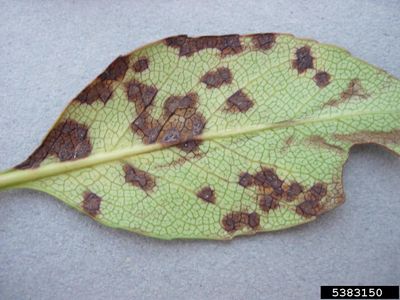About Quince Leaf Blight
Quince leaf blight is the most common reason for quince leaves turning brown. Small spots on the leaves is the first sign of quince leaf blight. The tiny spots form larger blotches, and soon, the leaves turn brown and drop from the plant. Shoot tips may die back, and the fruit may be brown and distorted. In severe cases, the disease may be fatal. The fungus (Diplocarpon mespili) overwinters on diseased leaves and dead shoots that fall from the tree. The spores are available to produce new infections in spring. The disease is spread primarily by these spores, which are splashed on the plant in rain drops. Thus, it’s not surprising that quince leaf blight is most severe during cool, wet springs and damp, rainy summers.
Treating a Quince with Brown Leaves
Managing quince leaf blight can be accomplished in a couple ways using non-chemical (most preferred) and chemical control methods.
Non-Chemical Control for Quince Leaf Blight
Rake up leaves and other debris throughout the year. Dispose of the debris carefully to prevent spread of the disease. This is the best way to prevent re-infection next spring. Prune the tree carefully during the winter months when the disease is no longer spreading. Be sure to remove all dead growth. Clean pruning tools with a 10 percent bleach solution to prevent spread to other plants. Water quince trees at the base of the plant. Never use an overhead sprinkler, which will spread the disease spores.
Controlling Quince Leaf Blight with Chemicals
Fungicides applied in the spring may be helpful to prevent or reduce quince leaf spot, but many products are unsafe if you intend to eat the fruit. Read the label carefully and limit certain products to ornamental plants. If you are unsure about the safety of any product, check with your local cooperative extension office before applying the spray. Most importantly, be patient and persistent. Eradicating quince leaf blight is difficult and may take a couple of years of careful attention.
